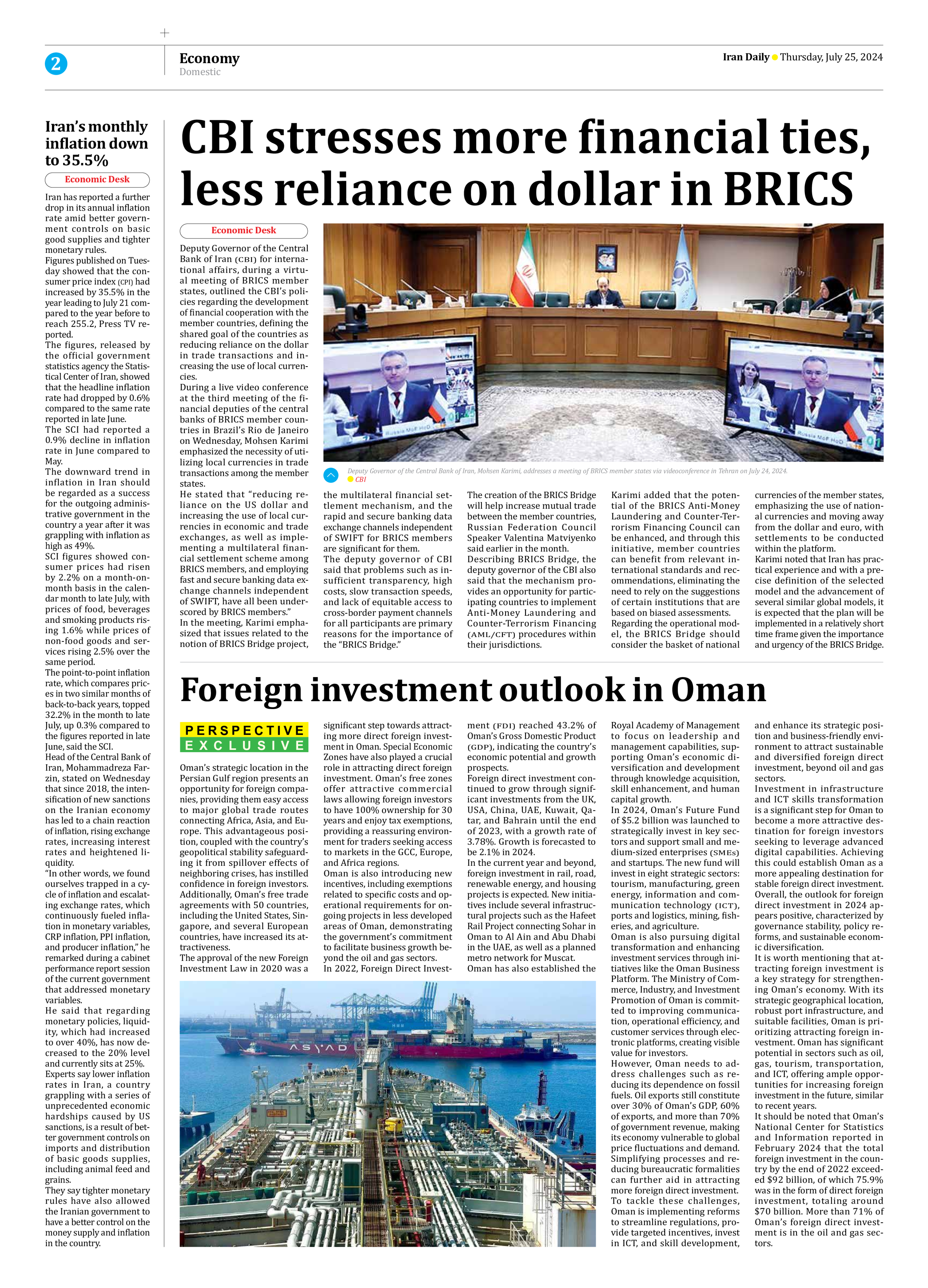
Foreign investment outlook in Oman
Oman’s strategic location in the Persian Gulf region presents an opportunity for foreign companies, providing them easy access to major global trade routes connecting Africa, Asia, and Europe. This advantageous position, coupled with the country’s geopolitical stability safeguarding it from spillover effects of neighboring crises, has instilled confidence in foreign investors. Additionally, Oman’s free trade agreements with 50 countries, including the United States, Singapore, and several European countries, have increased its attractiveness.
The approval of the new Foreign Investment Law in 2020 was a significant step towards attracting more direct foreign investment in Oman. Special Economic Zones have also played a crucial role in attracting direct foreign investment. Oman’s free zones offer attractive commercial laws allowing foreign investors to have 100% ownership for 30 years and enjoy tax exemptions, providing a reassuring environment for traders seeking access to markets in the GCC, Europe, and Africa regions.
Oman is also introducing new incentives, including exemptions related to specific costs and operational requirements for ongoing projects in less developed areas of Oman, demonstrating the government’s commitment to facilitate business growth beyond the oil and gas sectors.
In 2022, Foreign Direct Investment (FDI) reached 43.2% of Oman’s Gross Domestic Product (GDP), indicating the country’s economic potential and growth prospects.
Foreign direct investment continued to grow through significant investments from the UK, USA, China, UAE, Kuwait, Qatar, and Bahrain until the end of 2023, with a growth rate of 3.78%. Growth is forecasted to be 2.1% in 2024.
In the current year and beyond, foreign investment in rail, road, renewable energy, and housing projects is expected. New initiatives include several infrastructural projects such as the Hafeet Rail Project connecting Sohar in Oman to Al Ain and Abu Dhabi in the UAE, as well as a planned metro network for Muscat.
Oman has also established the Royal Academy of Management to focus on leadership and management capabilities, supporting Oman’s economic diversification and development through knowledge acquisition, skill enhancement, and human capital growth.
In 2024, Oman’s Future Fund of $5.2 billion was launched to strategically invest in key sectors and support small and medium-sized enterprises (SMEs) and startups. The new fund will invest in eight strategic sectors: tourism, manufacturing, green energy, information and communication technology (ICT), ports and logistics, mining, fisheries, and agriculture.
Oman is also pursuing digital transformation and enhancing investment services through initiatives like the Oman Business Platform. The Ministry of Commerce, Industry, and Investment Promotion of Oman is committed to improving communication, operational efficiency, and customer services through electronic platforms, creating visible value for investors.
However, Oman needs to address challenges such as reducing its dependence on fossil fuels. Oil exports still constitute over 30% of Oman’s GDP, 60% of exports, and more than 70% of government revenue, making its economy vulnerable to global price fluctuations and demand. Simplifying processes and reducing bureaucratic formalities can further aid in attracting more foreign direct investment.
To tackle these challenges, Oman is implementing reforms to streamline regulations, provide targeted incentives, invest in ICT, and skill development, and enhance its strategic position and business-friendly environment to attract sustainable and diversified foreign direct investment, beyond oil and gas sectors.
Investment in infrastructure and ICT skills transformation is a significant step for Oman to become a more attractive destination for foreign investors seeking to leverage advanced digital capabilities. Achieving this could establish Oman as a more appealing destination for stable foreign direct investment.
Overall, the outlook for foreign direct investment in 2024 appears positive, characterized by governance stability, policy reforms, and sustainable economic diversification.
It is worth mentioning that attracting foreign investment is a key strategy for strengthening Oman’s economy. With its strategic geographical location, robust port infrastructure, and suitable facilities, Oman is prioritizing attracting foreign investment. Oman has significant potential in sectors such as oil, gas, tourism, transportation, and ICT, offering ample opportunities for increasing foreign investment in the future, similar to recent years.
It should be noted that Oman’s National Center for Statistics and Information reported in February 2024 that the total foreign investment in the country by the end of 2022 exceeded $92 billion, of which 75.9% was in the form of direct foreign investment, totaling around $70 billion. More than 71% of Oman’s foreign direct investment is in the oil and gas sectors.







